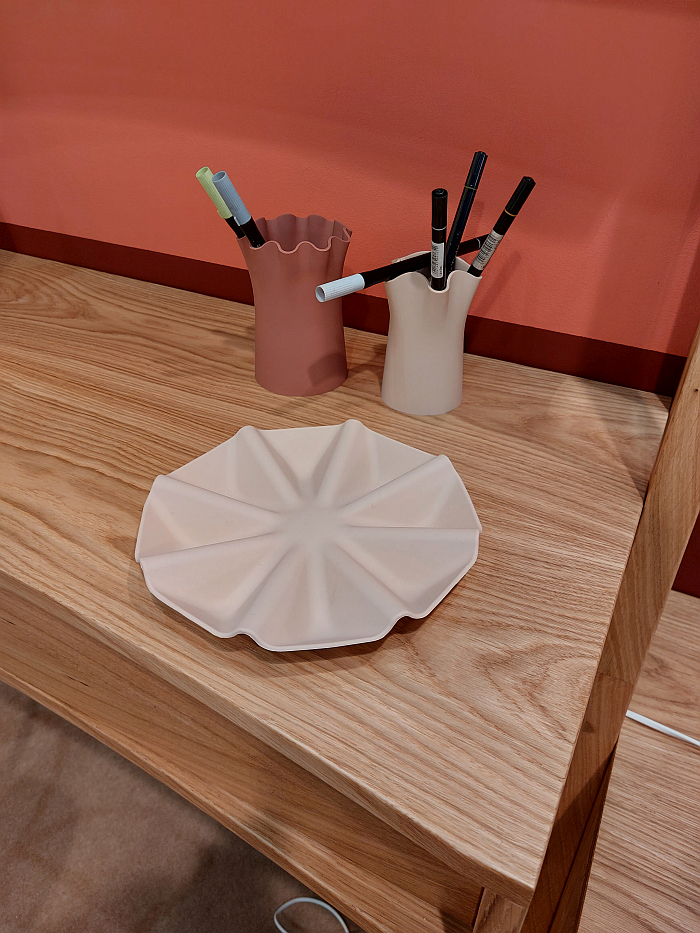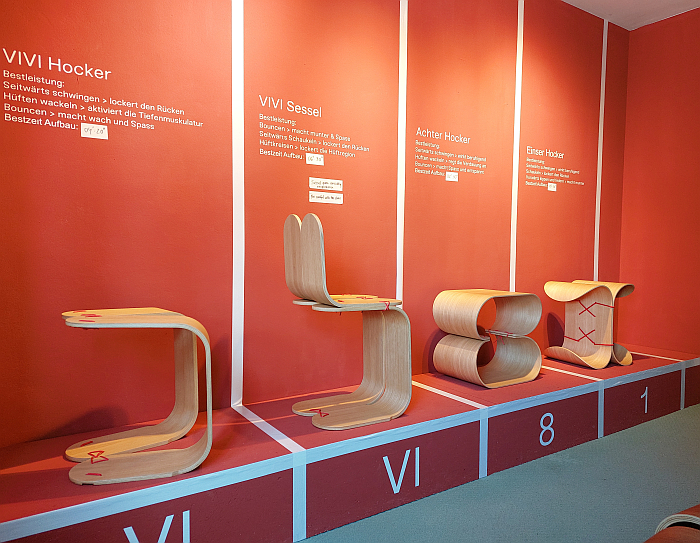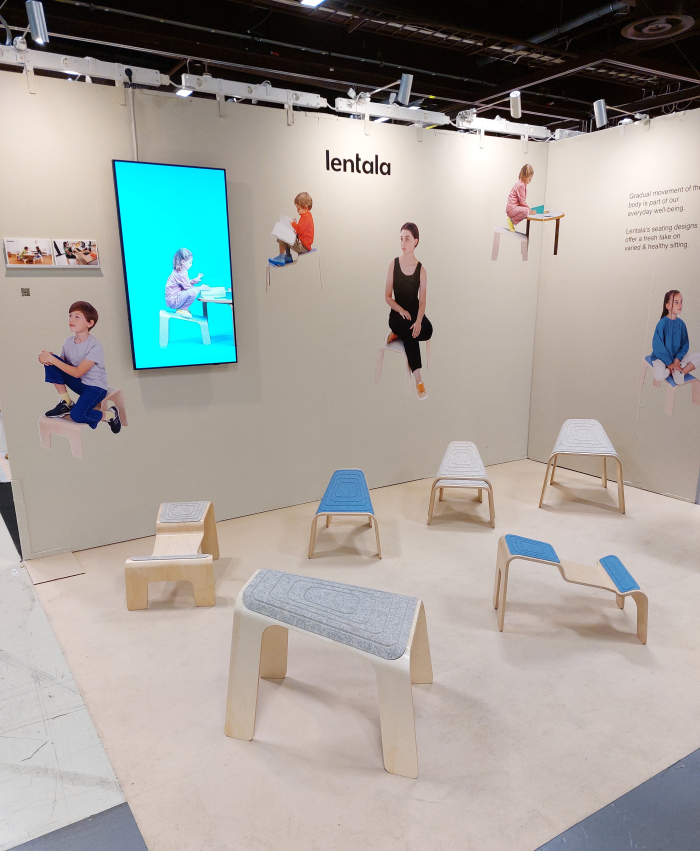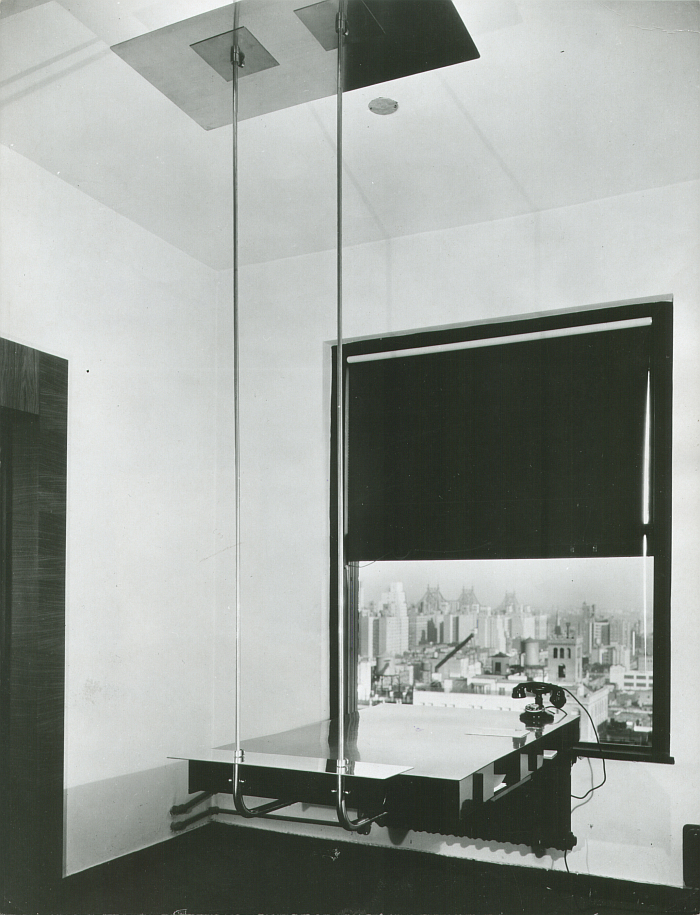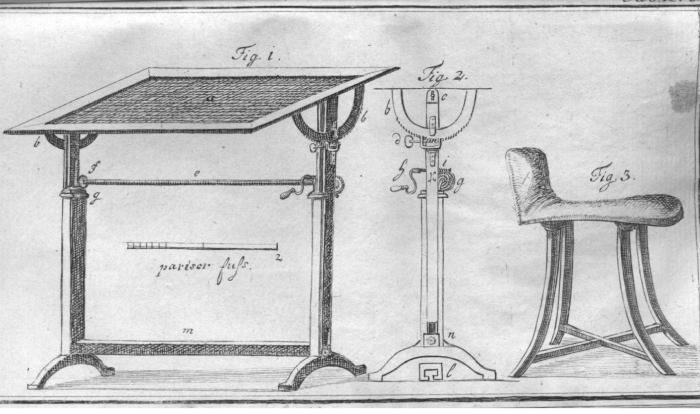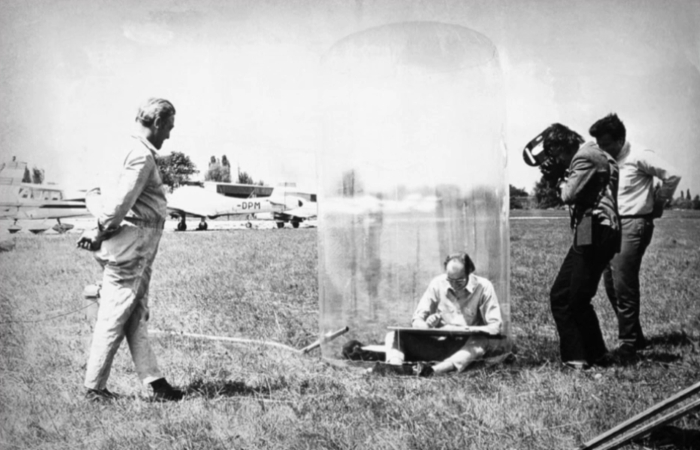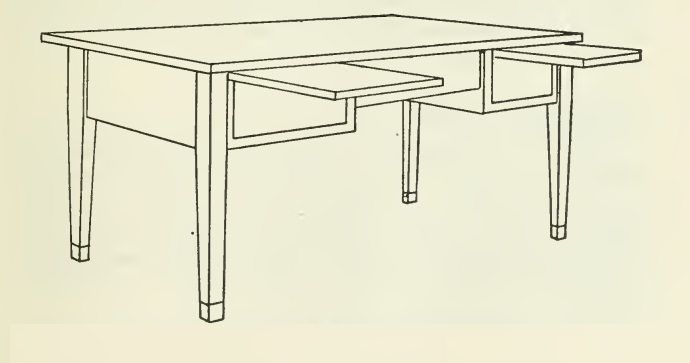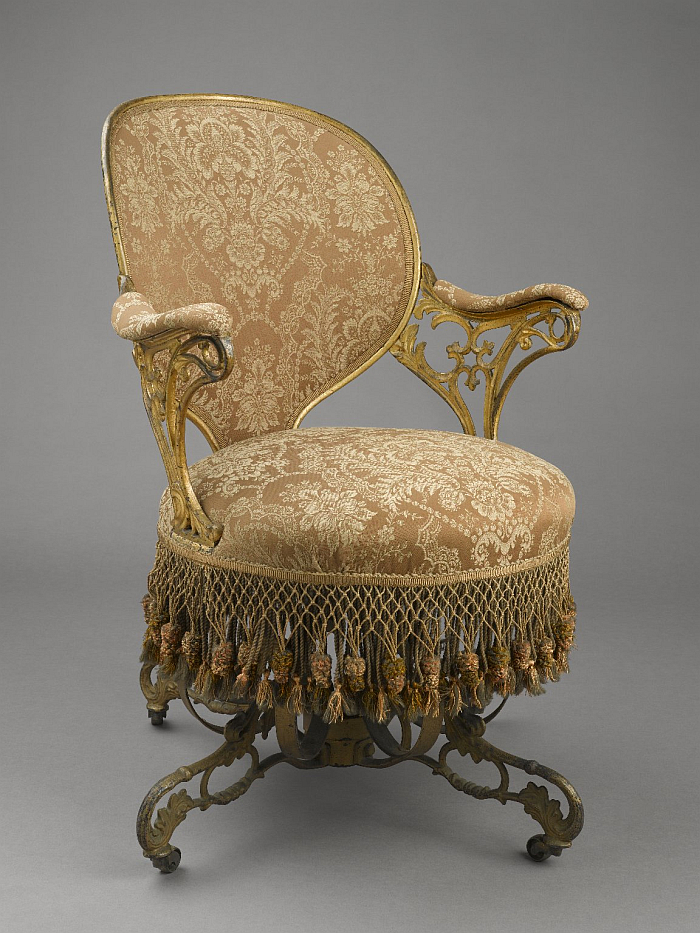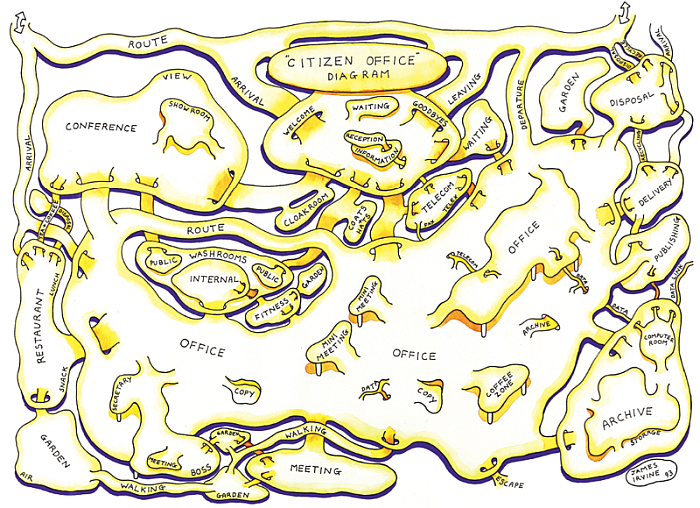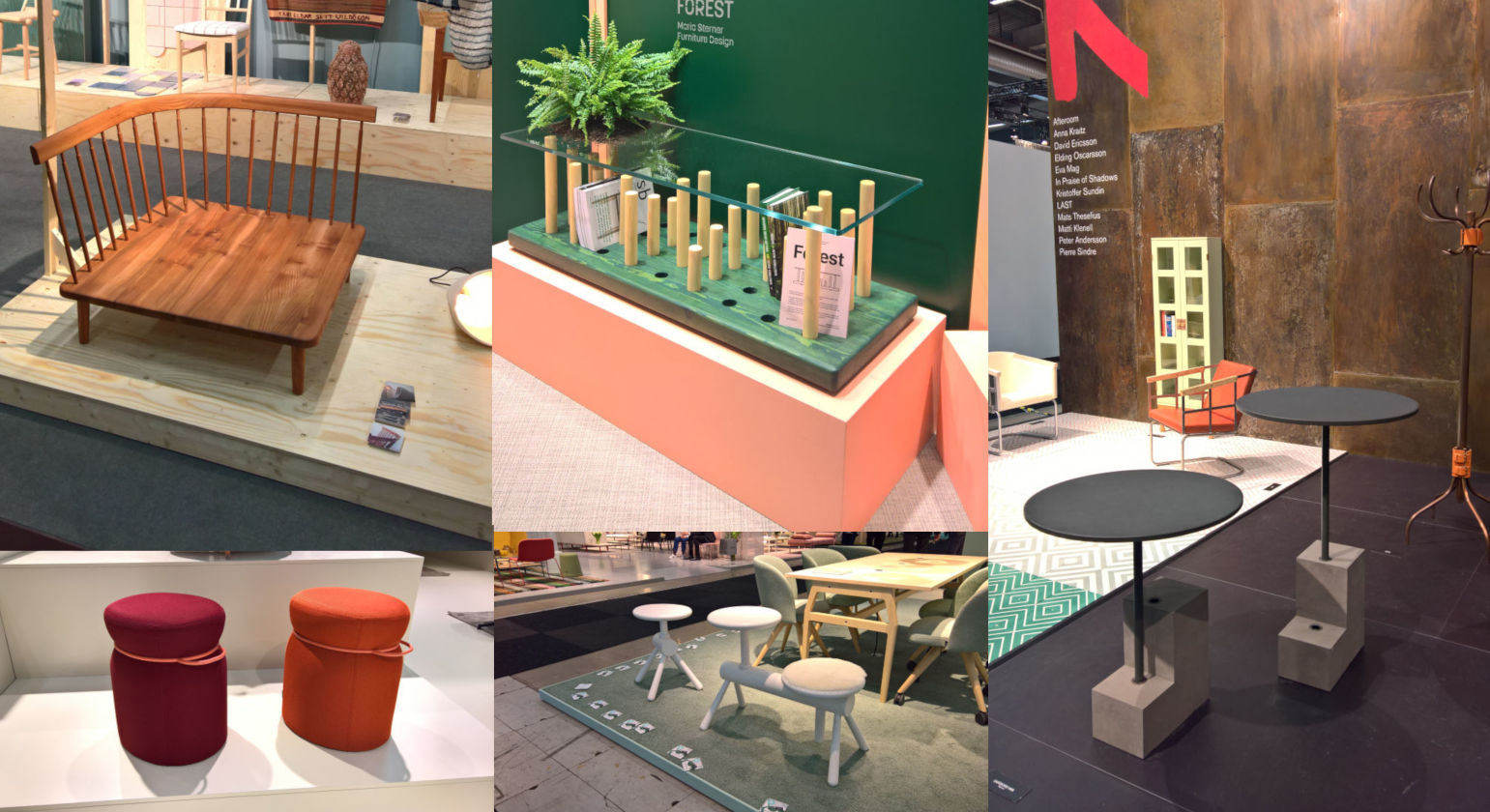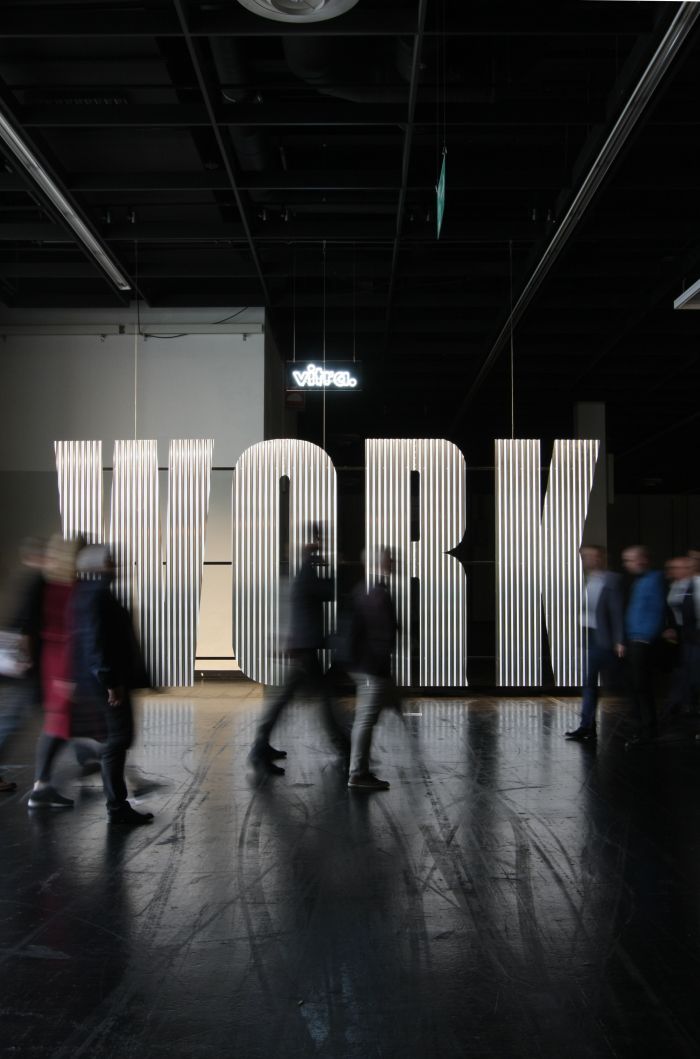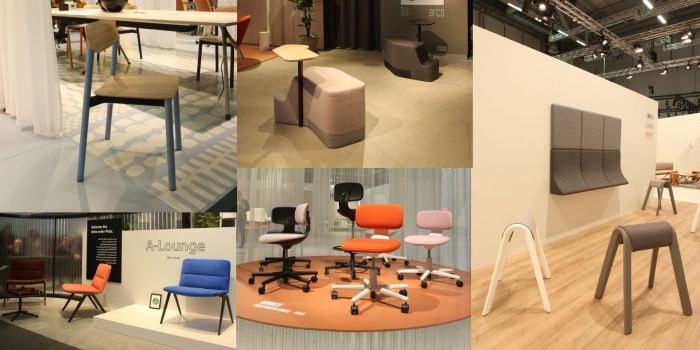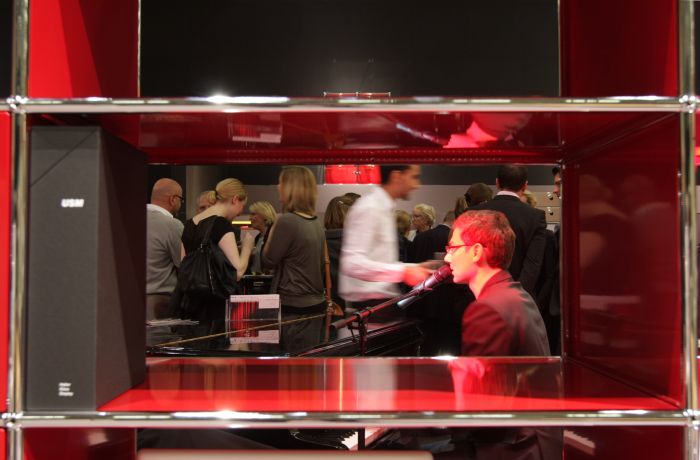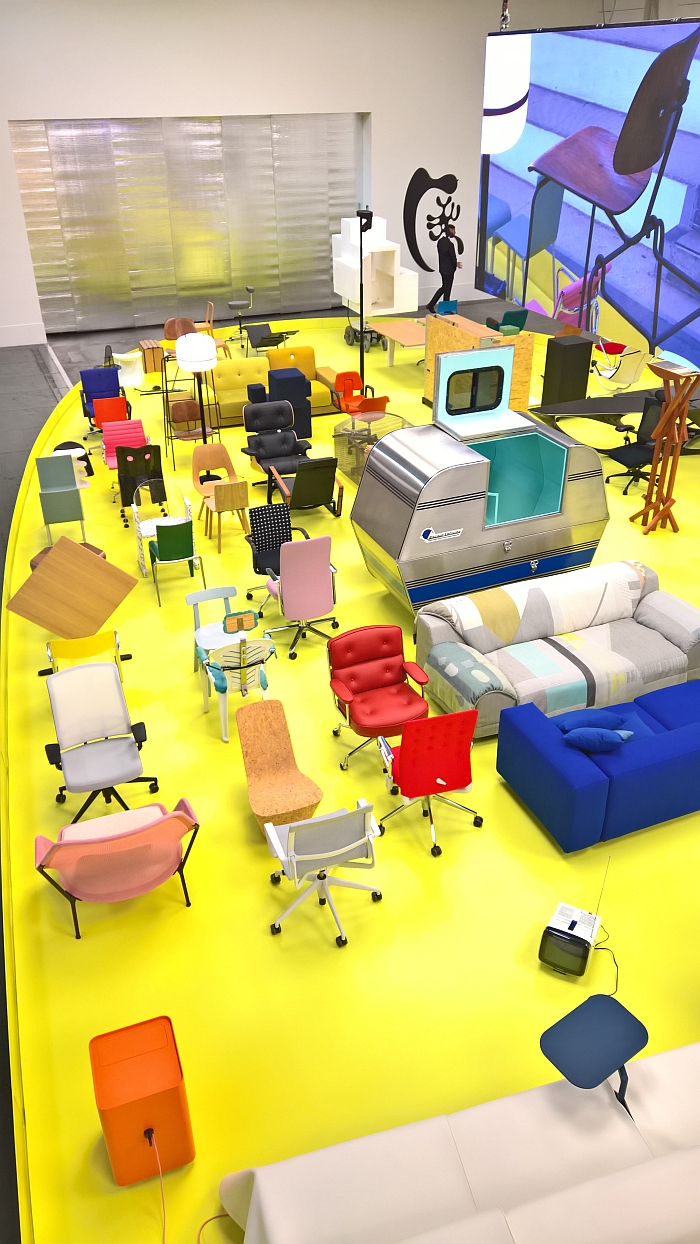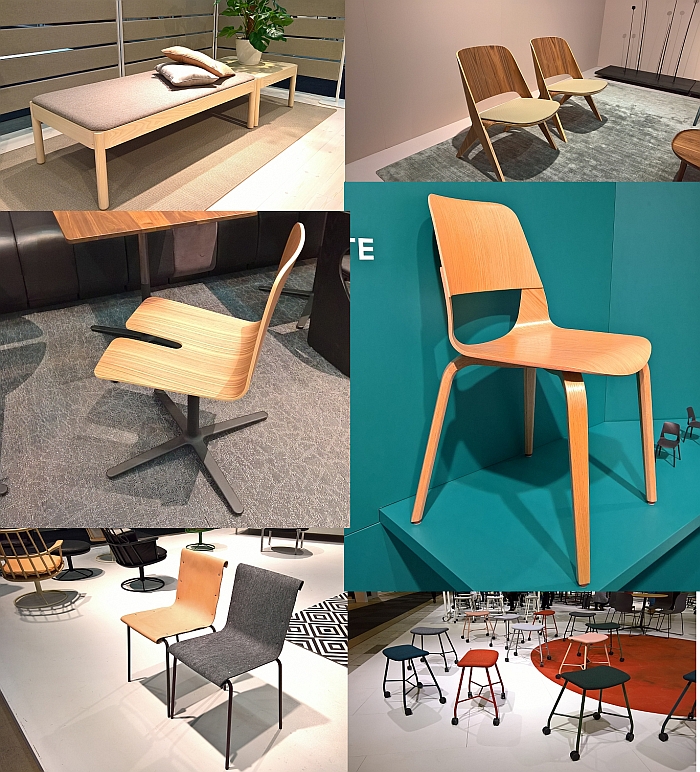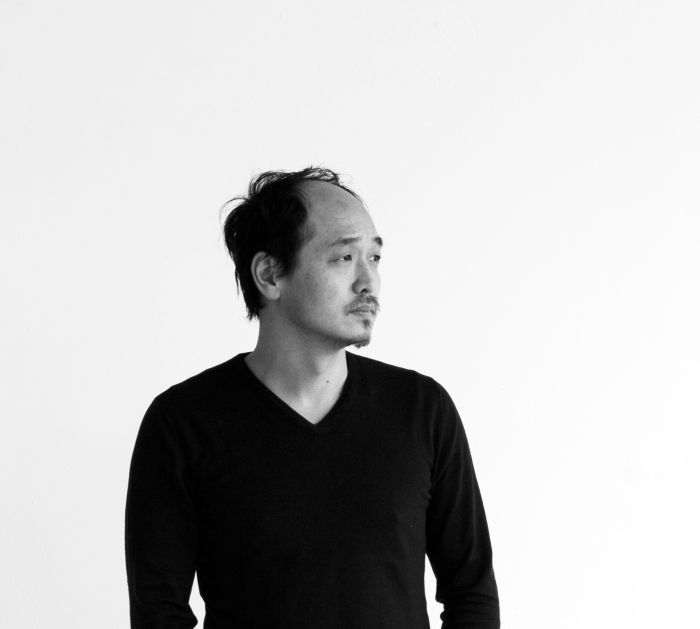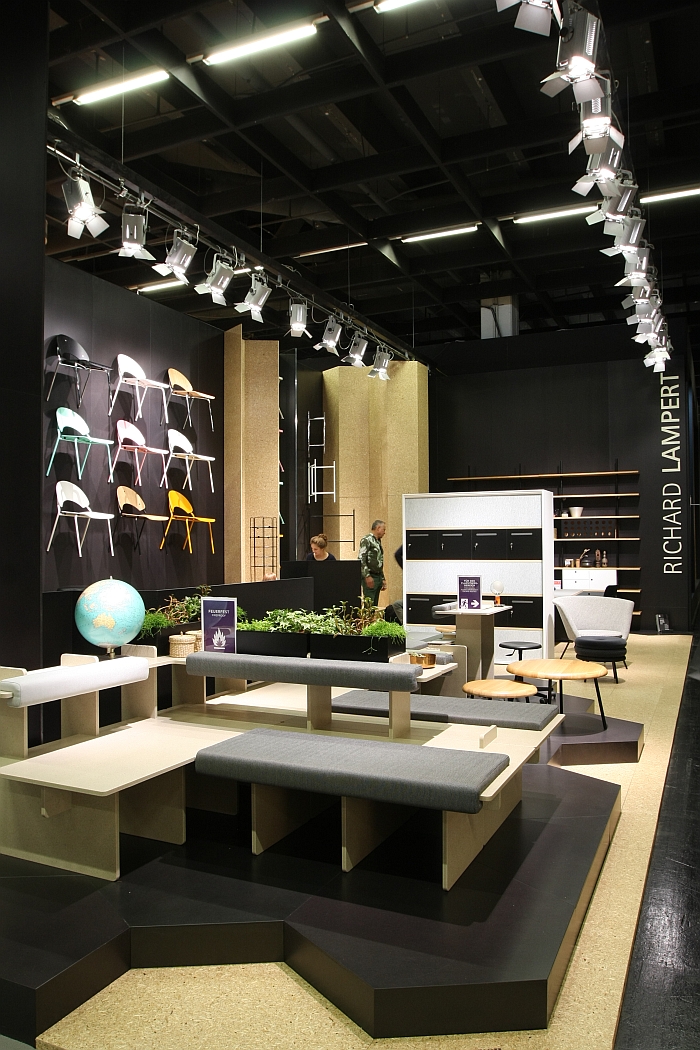Category: Office Furniture
Otthon Design Budapest 2024 Compact: Bold Collection by András Kerékgyártó for Brave Home
Lost Furniture Design Classics: The Flying Desk by Friedrich Kiesler
In 1947 the American designer Edward J Wormley reflected in the New York Times on what contemporary furniture could, should, be, and amongst his thoughts on beds, chairs, storage units et al, opined that “an ideal table would be a flat plane suspended in space”, and that not least because “it’s the legs that are the big nuisance”.
“Can we find this kind of furniture in today’s market?”, he asked his readers, albeit, rhetorically, “You know we can’t.”1
Which tends to imply Wormley didn’t visit the Home Show exhibition in New York in April 1930, for had he, he would have seen Friedrich Kiesler’s Flying Desk…….
#officetour Milestones – A chair “just high enough that one can sit half-standing”
“For men who have to write a lot, and over prolonged periods, a desk at which they can work standing up is an indispensable piece of furniture for altering their posture and for maintaining their health”, opined Journal der Moden in May 1786. An age when, famously, only men wrote.
Yet advantageous and positive as standing to write was, prolonged standing could, as Journal der Moden notes, lead to tiredness.
A solution was however at hand for all who preferred working at a standing height desk over a prolonged period: a chair, “or a so called donkey … on which one sits as if on a saddle, and which must be just high enough that one can sit half-standing…”1
A half-standing sitting solution whose nickname can be readily derived from the proposed sitting position.
And a half-standing sitting solution that for all it is thoroughly familiar today, was novel, one could almost argue revolutionary, and even enlightened, in 1786…….
#officetour Milestones – Mobile Office by Hans Hollein
In December 1969 the Austrian TV station ORF broadcast a half-hour portrait of the architect Hans Hollein, including a presentation of Hollein’s Mobile Office project: essentially an inflatable plastic bubble in which one person could sit and work.
“Klingt vielleicht etwas verrückt”, mused the presenter, “sounds perhaps a bit crazy”.
And in 1969 a device, a construct, that allowed for the creation of a private domain in the midst of a public space, unquestionably did sound “etwas verrückt”.
And in 2022…….
#officetour Milestones – The Modern Efficiency Desk
In his 1917 novel The Job Sinclair Lewis makes note of a group of ambitious young clerks who work in the offices at Pemberton – “the greatest manufactory of drugs and toilet articles in the world” – and who sat at “shiny, flat-topped desks in rows”.1
And you’re all currently thinking, yeah… and… ???
……. and… while that may be a valid response today, in 1917 ambitious young clerks sitting at rows of “shiny, flat-topped desks” were, when not a revolution, then a relative novelty, and for all were highly indicative of a period of fundamental evolution and development in understandings of the office, of office work, of office workers, of office desks. A period of fundamental evolution and development that continues to inform the 21st century office. And the 21st century office desk…….
#officetour Milestones – Centripetal Spring Chair by Thomas E. Warren
While understandings of form, of beauty, in context of the objects with which we surround ourselves continually evolve and develop, understandings of function are, generally, much more stable. Or at least are once they have been identified, understood and normalised.
Something that can be studied and appreciated in Thomas E. Warren’s Centripetal Spring Chair…..
smow Blog #officetour…….
Back in the year 1 BCE, Before Corona Epidemic, we developed a plan to use 2020 to tour through contemporary office design, a tour to be undertaken both physically and theoretically.
A very simple plan developed in the knowledge that in October the Orgatec office furniture fair would be staged in Cologne, and that such a tour would, hopefully, allow us to approach Orgatec 2020 from differentiated and manifold perspectives.
And a simple plan, which, and as with all simple plans, proved more difficult than anticipated. And became all but impossible in the year 1 CE. Or at least the physical part did, the theoretical part remains unaffected. And as older, more loyal, readers will understand, we’re at our happiest with the theoretical components of life.
Thus in the coming weeks we will present a series of (desk bound) reflections and considerations on aspects of both the contemporary office and contemporary public/civic/commercial interiors, whereby our Design Calender post on the opening of the 1993 exhibition Citizen Office at the Vitra Design Museum can be considered an official unofficial first step….. one originally planned as a fourth or fifth step…….
By way of a fuller introduction, and an explanation that despite the unequivocal title the smow Blog #officetour isn’t limited to offices , ⇓⇓⇓ the text we’d written as the original introduction…..
smow Blog Design Calendar: April 30th 1993 – Opening of Citizen Office at the Vitra Design Museum, Weil am Rhein
With the exhibition Citizen Office the Vitra Design Museum staged not only their first conceptual, research based, exhibition, but also one of the first museal reflections on “the world of the office”.
Reflections which not only pointed towards new directions and understandings then, but which offer insights and lessons for today…….
Stockholm Furniture Fair 2019: High Five!!
As regular readers will be aware, in these dispatches we, very, very occasionally, quietly bemoan a certain monotony at furniture trade fairs, protest that, if you will, we regularly find ourselves wading through an homogenous mass.
On this occasion we will however let someone else make that observation on our behalf.
In his 2015 book Swedish Design: An Ethnography the American anthropologist Keith M. Murphy notes of a visit to the 2006 Stockholm Furniture Fair, “[T]he only problem was, so much of the stuff here looked so similar, and I had a difficult time anchoring myself in the exhibition’s plan”, continuing later that, “[T]he place is predominantly suffused not with a variety of different kinds of objects, but rather with a variety of different objects of the same general kind.”1
So 2006. So 2019.
Though interestingly he does also note that, “one cannot evade the impression that Sweden endures under a tyranny of simple forms and solid bright colours”. These days it’s more solid pastel tones, but…..
Such isn’t exclusive to Stockholm, but can be experienced wherever the furniture industry meet to display their wares. Clearly there are a host of varied, arguably inter-related, causes for such a situation, but here is neither the time nor the space to discuss them; the consequence, however, is that walking through the halls of any give trade fair one finds that while many objects do speak to you, they all tend to do so with a repetition of the same limited vocabularies, often in a very forced, insecure, equivocal manner, and which thus, very quickly, becomes tiresome.
However as Keith M Murphy also notes, “not everything fit [sic] the model” and there are not only always objects to be found with something interesting to say, but which say that in an intelligent, literate and engaging fashion.
And so, and as ever, with the understanding that we have inevitably missed and/or not properly understood several gems, a smow blog Stockholm Furniture Fair 2019 High 5!!
Vitra – Work @ Orgatec Cologne 2018
At Orgatec Cologne 2016 Vitra staged, in effect, their own trade fair, renting an entire hall and inviting family and friends along to share the space and their ideas on the future of work.
And obviously had a lot of fun and/or success with the concept.
For at Orgatec Cologne 2018 they once again staged the Vitra Fair……. Work
Orgatec Cologne 2018: High Five!!
As previously, and repeatedly, noted, one of the defining aspects about an office furniture fair such as Orgatec Cologne is that wherever one looks one sees a similar vista. Whereas in terms of domestic furnishings there are enough genres of furniture and interpretations of those genres to allow for a, at least relatively when not necessarily satisfyingly, varied landscape, office furniture is much more limited, not only doesn’t have the variety of genres, but has a few that are essentials; consequently every manufacturer has very similar product lines, every manufacturer has, for example, a height-adjustable desk, a sofa with high sides, a desk height rocking stool, a modular bench system, and an office chair with flat, slightly organic quadratic armrests that resemble cutlery Georg Jensen may have produced in the 1960s. The differences are, generally, to be found in terms of mechanisms, connection systems, interfaces, materials or textiles, so very technical aspects. Very important aspects, very fundamental aspects, but things that aren’t necessarily instantly visible. Hence the visual monotony. And aspects which when explored in detail aren’t always that interesting/innovative/engaging/sensible/relevant/practical/functional/etc. It’s a tiring, thankless, business working your way through such a landscape.
Particularly a landscape such as Orgatec 2018 which was, at least as we experienced it, largely about consolidation, about manufacturers extending existing product families or presenting existing products in new materials, new textiles, new colours, new fragrances, etc, etc…..
Which isn’t to say it wasn’t a thankless and fruitless task, just thankless, and thus, and with the standard disclaimer that we have invariably missed numerous genuine highlights, a smow blog Orgatec Cologne 2018 High 5!!
Radio smow: An Office Furniture Playlist…..
It’s probably no exaggeration to claim that musicians have at best an ambivalent, truculent, openly confrontational relationship with the office. When not writing about being in love, not being in love, wanting to be in love, wanting to not be in love, etc, they can be found pouring scorn and ridicule on those who dutifully waste their days in offices when there is all that freedom to be enjoyed.
Thus one could imagine songs about office furniture being about as rare as occasions when Caílte mac Rónáin is unable to explain how a particular hill, valley or river in Ireland came by its name.
Could.
A Radio smow playlist devoted to office furniture and our complex relationship with such……
Milan Design Week 2018 Compact: Vitra – Typecasting
Whereas exhibitions in which designers show prototypes and discontinued projects by way of explaining who they are, where they come from and how they work, are a, relatively, regular occurrence, exhibitions in which manufacturers do such are much, much rarer: with the exhibition Typecasting Vitra make a very rare and very welcome exception
And in doing so don’t just present an image not only of Vitra past, but also take a look into the future…..
Stockholm Furniture & Light Fair 2018: High Five!!
One of the most striking aspects at Stockholm Furniture and Light Fair is the way the various Scandinavian manufacturers try to impress how old they are. Arguably on account of the sheer concentration of Scandinavians at the region’s premier furniture and lighting trade fair, you will rarely find so many in one place at one time, all seem locked in a battle to claim the status as oldest, to lay claim, as it were, to being the elder statesmen of the guild.
Established in 1964 screams one stand. Founded in 1907 another. Since 1869. Etablerad 1724. Constituted in 1079 in the reign of Harald the Soft. Et cetera. Et cetera. Et cetera. Further and further back into the ether of time.
One suspects the reason is that given the relative similarity of the products on display, each is keen to show that they have been doing it longer than the rest.
Yet the question isn’t who has been doing it the longest, but who is doing it best.
Or perhaps better put, elsewhere the question wouldn’t be who has been doing it the longest, but who is doing it best; but we’re talking about the furniture industry, an industry which in its heart has always been about taking inspiration from others. Something which increasingly means a focus on a few universally accepted archetypal “Scandinavian” forms: and not just amongst Scandinavians, we also spotted a few non-Scandinavians trying their utmost to claim a northern heritage.
Which shouldn’t be taken as meaning that all the stands were carbon copies of one another, that all had identical portfolios and nobody was trying new things. Nor that there weren’t objects of merit on show. It doesn’t. Far from it. Such isn’t our intention. Should however be taken as meaning that throughout the fair one is and was regularly greeted by variations on a very small number of basic forms. If you will by the fundamental geometry of understandings of Scandinavian design.
Yet, and much as we argued in our post from IMM Cologne on the 118 by Sebastian Herkner for Thonet, for us things get difficult when the object, the form, becomes the main focus of attention, rather than the thinking, processes and traditions which led to the object, the form, achieving its exalted position. And considerations on such were, for us, too infrequently on display. Or at least drowned out by the shouting
As ever we may have missed things, we’re certainly not claiming totality, not least because our list is by necessity limited, with that in mind, and in no particular order, our Stockholm Furniture and Light Fair 2018 high five! six!
#campustour Interview: Patrick Frey, Assistant Professor, Hochschule Hannover
Just as the Eamsien adage proclaims that “the details are not the details; they make the product”, so too are a design school’s teaching staff not the teaching staff, they make the school.
Consequently, it follows that to better understand not only an individual institution, but also both the wider contemporary condition, and possible future directions, of design education, it is important to talk to, and understand, design school teaching staff; both those full-time Professors, and also those practising designers who have accepted the responsibility of instructing future generations.
Practising designers such as Patrick Frey, Assistant Professor at the Hochschule Hannover.
Orgatec Cologne 2016: Richard Lampert
Back in February we spoke with Richard Lampert and he told us he was planning exhibiting at Orgatec.
Had a few ideas he said.
Boy, did he have ideas………
Orgatec Cologne 2016: High Five!!
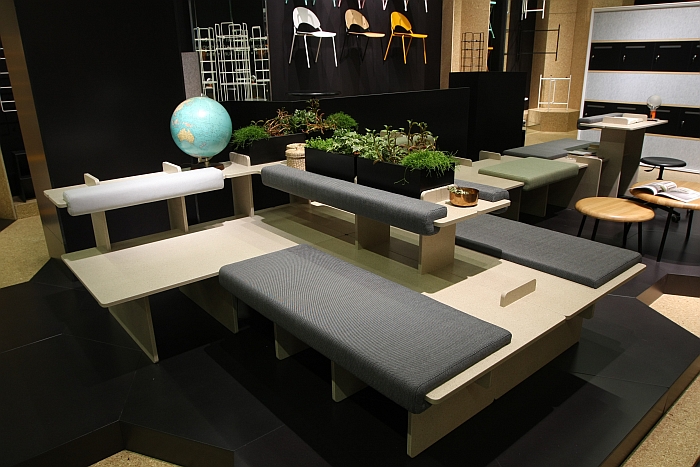
We must start with a confession . This High Five! is a High Four! Not because there weren’t good products
NeoCon Chicago 2016 Interview: Tom Van Dessel, CEO, BuzziSpace America
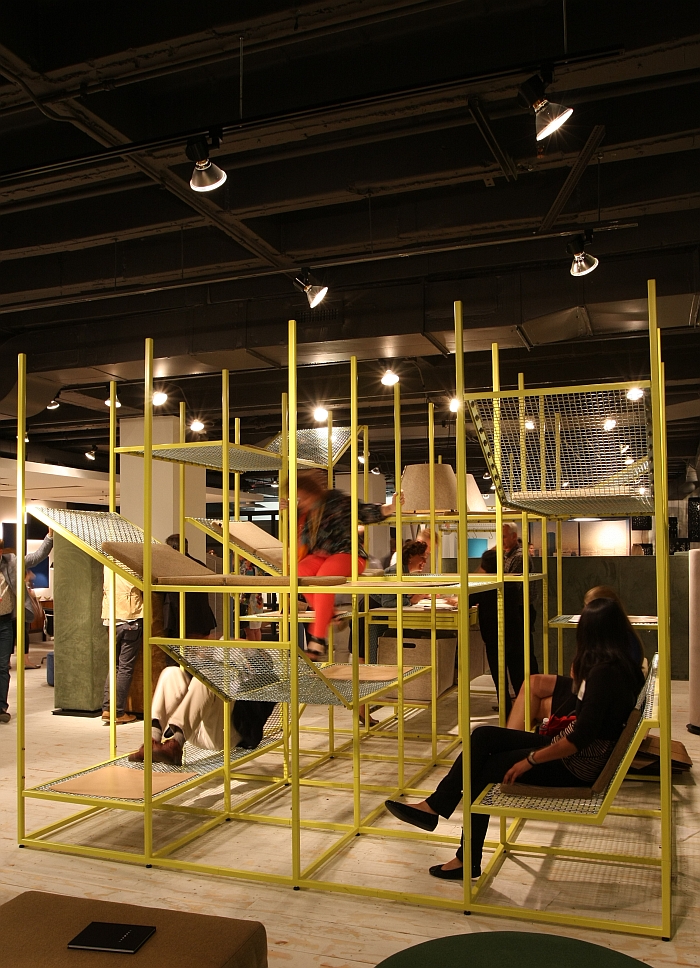
“The fact that you are European allows you to be quirky. Europe has a great reputation for good design but
Cologne Creative: Felix Stark – As a designer you always have to make it clear what you stand for
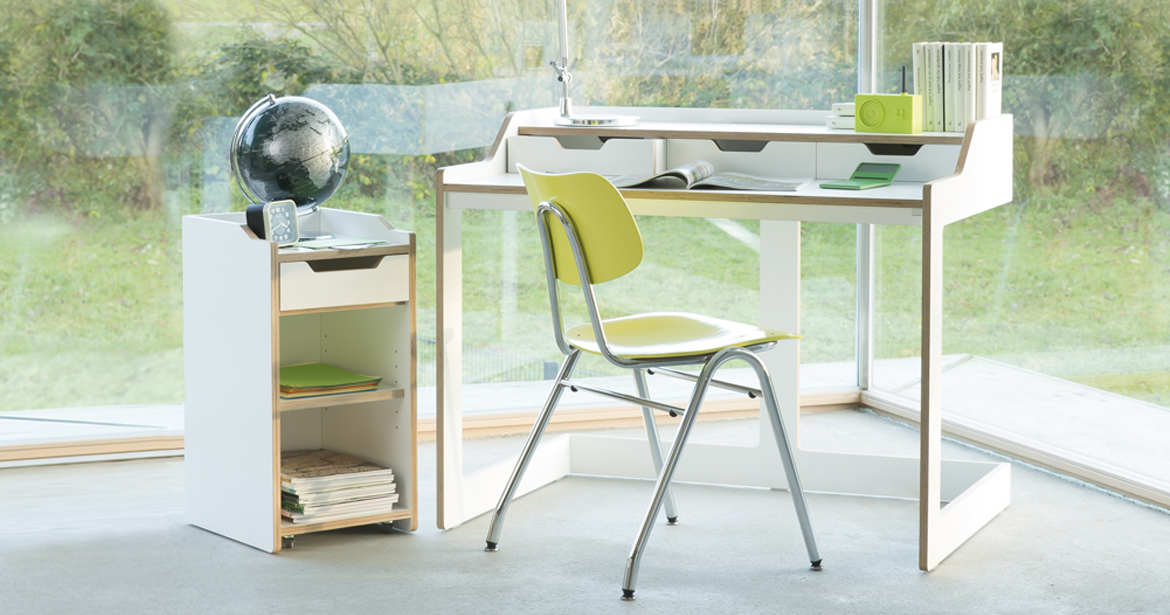
Continuing our series of posts on creativity in Cologne, historic and contemporary, we met up with product designer Felix Stark.
NeoCon Chicago 2016 Interview: Josef Kaiser, Chief Sales Officer, Vitra
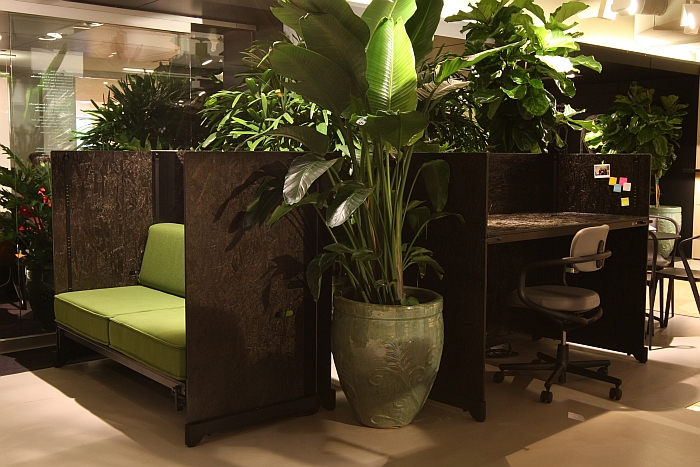
Although geographically the (hi)story of Vitra begins in Basel, spiritually it begins in America and arrives in Switzerland in 1957
smow blog Interview: Markus Jehs – Discourse is the most important aspect of design
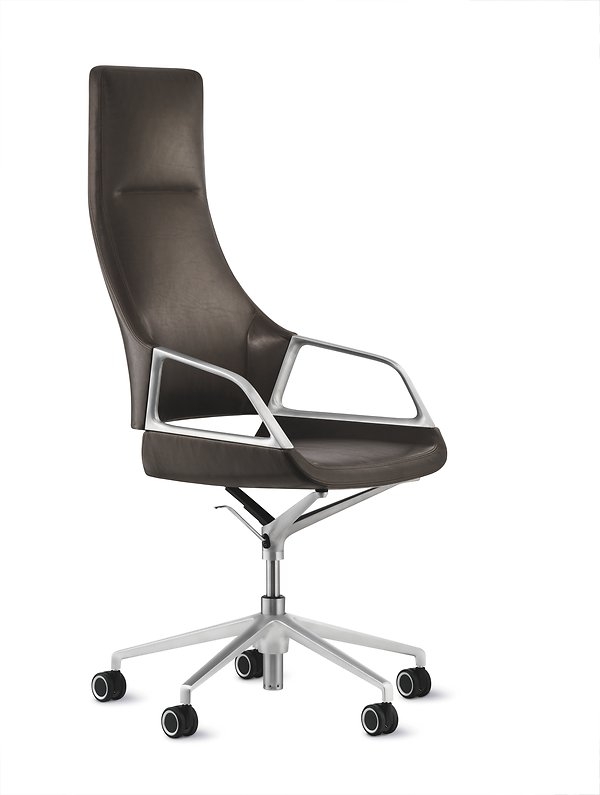
Although Stuttgart based design studio Jehs+Laub are in many respects best known as the winners of the inaugural Moormann Bookinist
smow Blog Interview: Tom Newhouse – aesthetics, sustainability, ergonomics and economy must be in equilibrium, if they aren’t the design isn’t finished
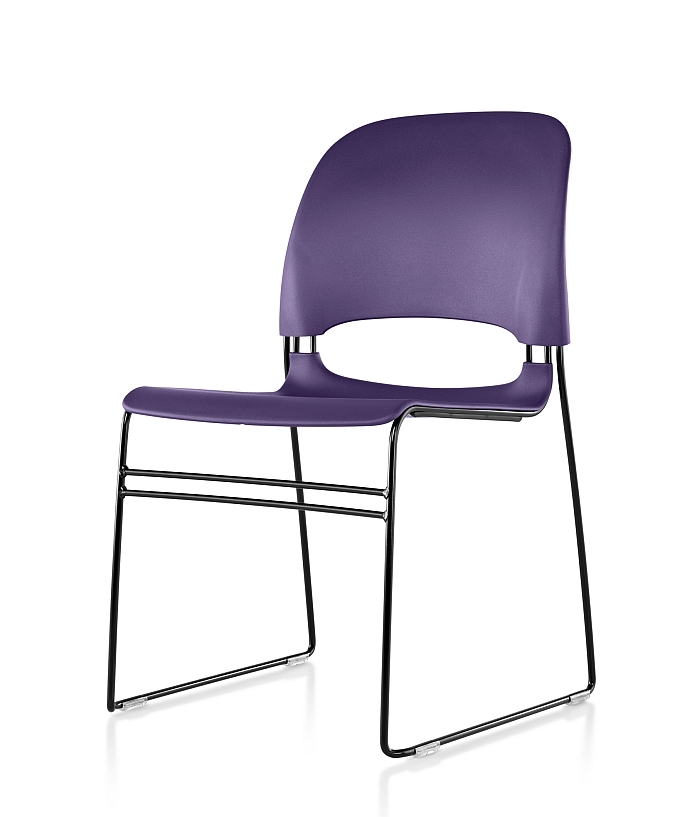
Born and raised in Grand Rapids, Michigan, a town famous for some 150 years as a, if not the, centre
smow blog Interview: Alain Gilles – For me the benchmark is never to lose the functionality, I like to create works which have a very graphic character, but they need to work as intended and to work well
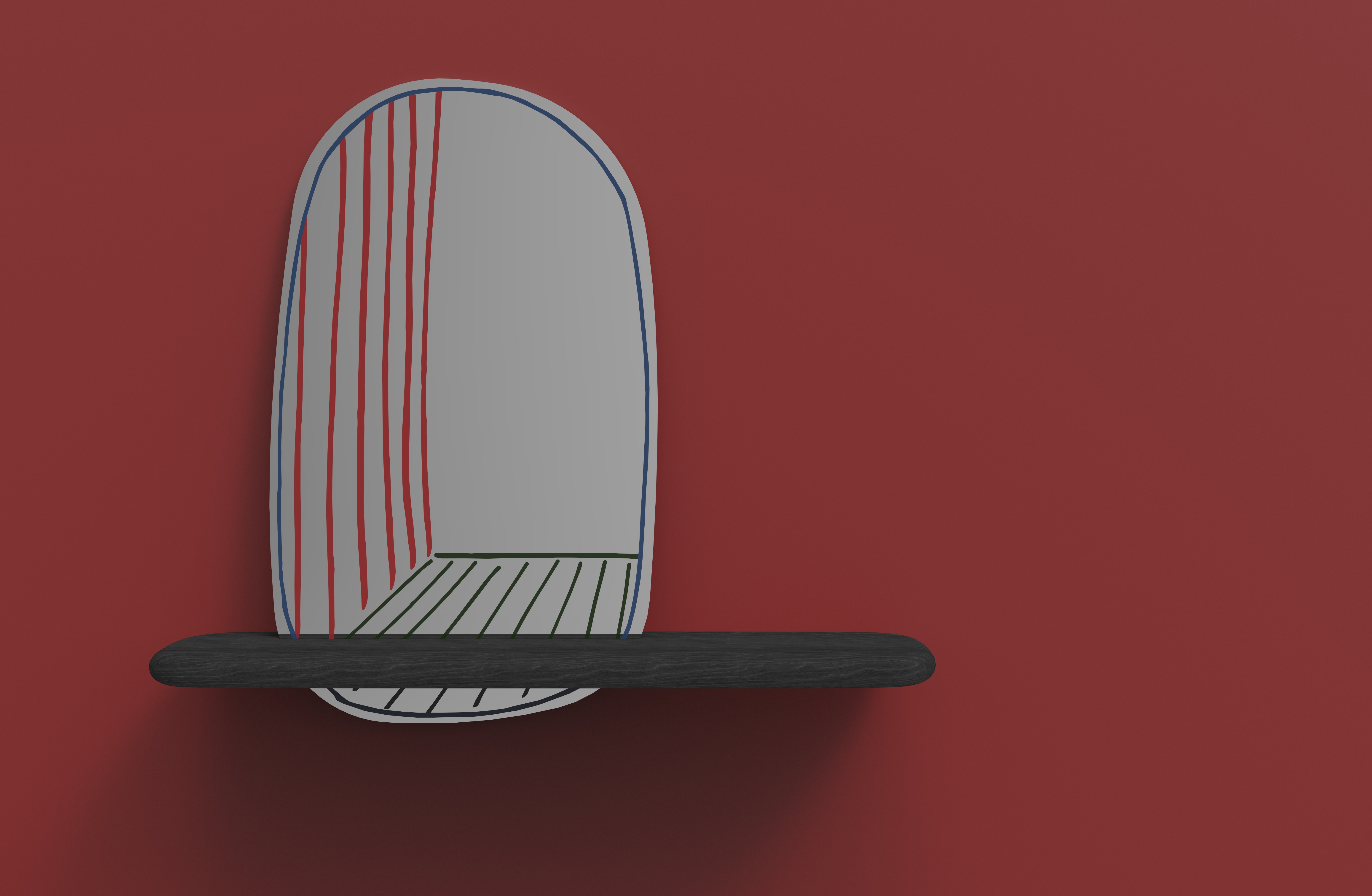
Whereas the careers of most product and furniture designers follow a very similar path and pattern over apprenticeship, internships and
